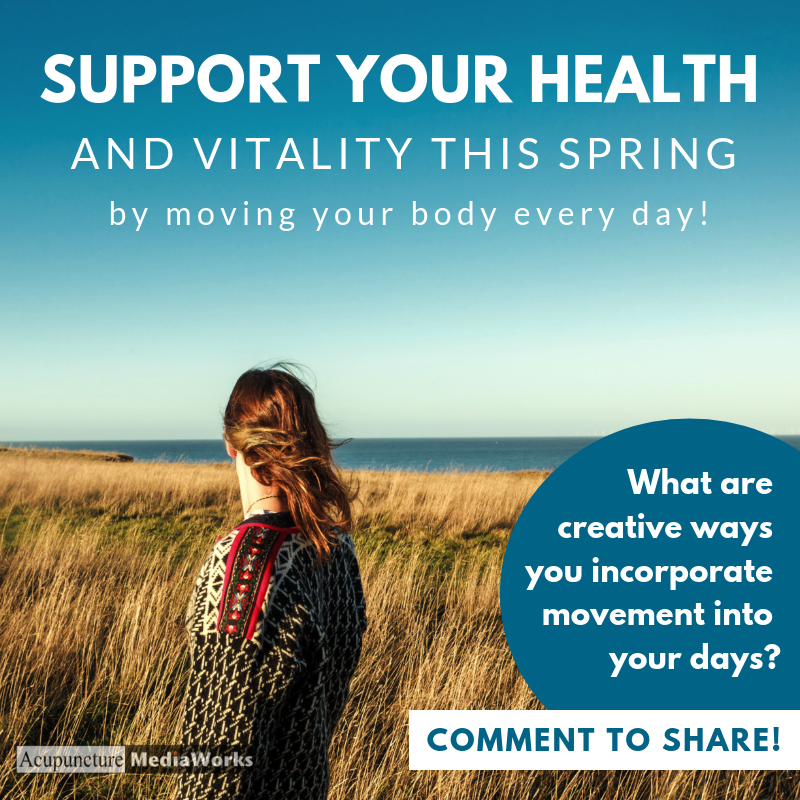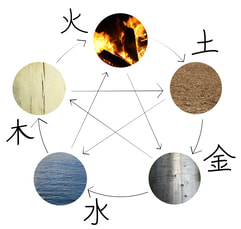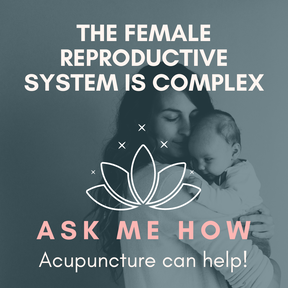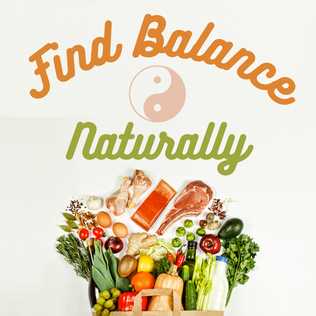 Traditional Chinese medicine says aligning your diet with the seasons is one of the best ways to stay healthy. Mother Nature provides exactly what we need to be healthy. Paying attention to the fruits, vegetables and herbs that grow during different seasons in the region where you live is a great way to incorporate the philosophies of traditional Chinese medicine into your own life and access greater healing. In the spring, TCM suggests eating cooling foods to balance out the effect of warmer temperatures outside. TCM also suggests taking the time to be mindful about the environment and energy around you when you eat. If you are stressed out or rushing when you eat, that will affect how your body is able to process the nutrients you’re consuming. Breathe deeply, chew well and take the time to digest your food. For more spring in your step, here are four specific foods that can support your health and wellbeing this spring. Lemon: In traditional Chinese medicine, the organ associated with spring is the liver and the flavor associated with the liver is sour. Sour foods, like lemons, help flush toxins from the liver. Adding fresh lemon to a cup of warm water each morning is a great, simple, practice that will do wonders for your liver. Greens: Fresh leafy greens are most plentiful during the spring, and eating them is associated with cleansing and building. The bright green color of leaves comes from chlorophyll, which is a wonderful healing agent. Any greens, but especially those darker in color, like spinach or wild greens such as dandelion greens, are very beneficial. Asparagus: Asparagus is a finicky plant with a short growing season: spring. Make a point to catch this plant powerhouse. Asparagus is full of vitamins A, C and K as well as folate and fiber. According to TCM, asparagus builds the nourishing fluids in the body, meaning it soothes irritation and helps fertility. It also promotes healthy lungs, clearing congestion and conditions like bronchitis. Fruits and vegetables: In general, spring is the time of year when more fruits and vegetables become available locally. Peruse your local farmer’s market or take note of any produce in the grocery store that’s labeled “local.” Incorporate these items into your diet in abundance! Try incorporating these foods and cleansing principles with this delicious spring salad! Asparagus, snap pea and quinoa salad Feeds 4-6 Ingredients:
 5 Elements of Chinese Medicine, Earth, Fire, Metal, Water and Wood 5 Elements of Chinese Medicine, Earth, Fire, Metal, Water and Wood Getting enough truly restful sleep is one of the most biggest factors in staying healthy and balanced, mentally and physically. Actually sleeping enough is much easier said than done for a lot of people, though. Our busy lives can prevent us from placing a premium on sleep, and anxiety and a restless mind are commonly linked to poor sleep as well as sleep apnea. These three suggestions for getting better sleep draw from yogic philosophy and the traditional Chinese medicine practice of acupressure. Each step is a way to calm the mind, slow down the thoughts and foster a more intentional transition to sleep at the end of each day. 1. Legs up the wall pose. This is a very simple, restorative yoga pose that can be done anywhere you have a blank wall space. To get into the pose, sit down on the floor with one hip as close to the wall as possible. From there, lie down on your back and swing your legs above your hips, so they are supported vertically by the wall and your head is away from the wall, facing the center of the room. Stay in this pose for as long as feels supportive, anywhere from one to 15 minutes. While you’re here, try to breathe deeply and relax into the posture. Laying with your feet above your head eases the effects of gravity on tired muscles and joints, can help lower blood pressure by increasing the flow of blood toward the heart, and signals to your body that it’s okay to fully relax. Your body also will digest all the food in your system in this position, which can also support you in getting more restful sleep. 2. Equal part breath Equal part breath, also known as sama vritti pranayama, is a simple, calming breath practice that you will feel the effects of even if you do it for just two minutes before bed. Sit in a comfortable position where your spine is straight above your hips. It can be helpful to prop your hips up on a blanket or pillow in this pose. You can rest your hands in your lap or anywhere that feels comfortable. Start to inhale for a count of four and then exhale for a count of four. Repeat this a few times, inhaling and exhaling for the same length of time. Then, increase the breath to a count of five. After a few rounds, you can increase to a count of six. Once you have reached a length that feels both deeper than how you normally breathe, but also sustainable, maintain that breath for as long as you want. 3. Spirit Gate acupressure point This acupressure point is located on the inside of your wrist, in the crease directly below your pinky finger. This point is often used to alleviate stress, over-excitement, anxiety or cold-sweats, all of which can contribute to insomnia or sleep apnea. Apply mild pressure to the point on your right wrist for one minute and then switch to the left. You can do this before bed, lying in bed before you fall asleep or in the middle of the night to support yourself in falling back to sleep  Aches, pains, fatigue, constipation, skin tags, stress, anxiety, colds, bad breath, sleep apnea, muscle soreness, etc. The list of the everyday ailments many people face is endless. And the medical profession is cashing in on all of it. Why? Because we’re programmed to believe our family doctor has a pill or procedure for everything. But that’s just not true and more importantly, how many pills are you willing to take every single day? Or how many procedures are you willing to undergo? Pills and procedures have side effects, and some can be quite harmful. Many of the pharmaceuticals we’re now familiar with are derived from naturally-occurring substances. For instance, aspirin was originally derived from the bark of the willow tree and written about by ancient Egyptians. Now, most of the “cures” we use daily are man made in a factory somewhere, using chemicals that tend to be toxic to our bodies when used long term. But there are always alternatives. Here are some everyday ailments and the alternative/uncommon cures that have been documented over the past few decades. 1. Muscle pain and soreness – This common affliction can be treated using cherries or cherry juice. A recent study at the University of Vermont showed drinking 12 ounces of cherry juice twice daily led to faster muscle pain relief. This is because cherries contain inflammation-fighting antioxidants that help ease muscle achiness. The juice also has a positive side effect of helping insomnia sufferers fall asleep more quickly. 2. Sleep apnea – According to the National Sleep Foundation, this ailment affects more than 18 million American adults. Sleep apnea is a disorder caused by flabby throat muscles and tends to be exacerbated by those carrying extra weight. A recent study published in the British Medical Journal listed a surprising way to decrease sleep apnea….blowing on a didgeridoo. Yup. Those long wooden trumpets used by the aborigines of Australia can actually help ward off sleep apnea by strengthening the muscles and tissues in the throat and mouth. When these muscles are strengthened, there is less chance of the tongue obstructing the airway. Obviously, this one takes some time to see results, as the muscles and tissues have to build up over several months. 3. Skin tags – These common skin growths that stick out from the surface of the skin can be large or small, flat or rounded and affect nearly three million United States citizens each year. While these little annoyances can be removed by a doctor, there is no need. Apple cider vinegar works well at removing these unsightly blemishes. By simply soaking a cotton ball in apple cider vinegar and then covering the skin tag with the cotton ball and a bandage a couple of times per day, the tag will eventually dry up and fall off. There are many different approaches to treating everyday problems and afflictions, there are even books written about the subject. While many of these “home remedies” are available for anybody to try, it is recommended to do research before taking the leap. You might be surprised how easy it is to “cure” yourself using uncommon and unconventional methods.  In 2015, the American Journal of Rhinology and Allergy published research that found acupuncture is effective for the treatment of allergic rhinitis. Allergic rhinitis is also known as hay fever. The researchers compiled the results from 13 quality studies, which followed 2,365 participants. The various studies confirmed that acupuncture significantly lowers the antibody known as immunoglobulin E or IgE. IgE is the antibody associated with allergies and hypersensitivities. The researchers found not only was the IgE antibody lowered, but so too were the symptoms associated with allergic rhinitis. Additionally, the participants reported better quality of life. Acupuncture and Traditional Chinese Medicine (TCM) can offer a solution to seasonal allergies that is all natural and will save you money. TCM uses an elemental system to determine where there are excesses and deficiencies in each person, allowing the treatments to be completely customized to each patient. The unique treatment plans not only make them more effective than one-size-fits-all, over-the-counter medications, they also address imbalances in each person that would not necessarily be connected to an aggravation of allergies in Western medical thought. When using TCM to treat allergies, practitioners focus heavily on something called Wei Qi. Wei Qi is similar to the immune system in Western medicine. Wei Qi protects the body against foreign materials that can lead to inflammation and eventually allergies. People with lower immunity or Wei Qi are more susceptible to allergies and frequent colds. Acupuncture helps to boost the Wei Qi making it more difficult for allergens to attack the body. Acupuncture by itself will make a difference in fighting allergies, but adding herbs and herbal formulas will provide the final punch to help eliminate allergies for good. Because each patient has different causes for their allergies, adding herbal formulas can greatly increase the efficacy of the acupuncture treatments by extending the effect of the needles. For example, if a patient specifically gets itchy, watery eyes when their allergies flare up, then the practitioner would likely want to draw the excess energy down. In this particular case, the patient would have an excess of fire-creating wind. The practitioner would use acupuncture points known to decrease fire and wind in the body. Then, adding herbs that do the same thing would create a one-two punch type of treatment that has longer lasting, more permanent effects. Ultimately, acupuncture boosts the Wei Qi while decreasing the inflammatory response in your body that occurs when an allergen is encountered. The other aspect of treatment, as stated earlier, is to look at the patient as a whole versus just the symptoms, perhaps bringing other elements into balance that you might not think would have an effect on allergies. A good acupuncturist will focus on dietary habits that may be contributing. Many times a person’s Wei Qi is depleted from within due to the foods they are eating. Foods like sugar and dairy are often associated with a lower immune system. Eliminating or drastically reducing these items will allow the body to recover more quickly, making allergy attacks easier to resolve. A comprehensive plan that includes acupuncture treatments, herbs and dietary changes will yield the best results when it comes to fighting allergies. Be sure to seek out a professional, fully trained and properly licensed acupuncturist and you will be grateful year after year for the relief they provide when it comes to treating allergies. http://www.healthcmi.com/Acupuncture-Continuing-Education-News/1435-acupuncture-relieves-sinus-allergies |
AuthorsRebecca M H Kitzerow is a Licensed Acupuncturist practicing in La Center, Washington. With over a decade of experience she has won 10 Nattie consumer choice awards from Natural Awakenings Magazine since 2014. Archives
July 2024
Categories
All
|
Photos from Hey Paul Studios, BeGreen_Studio, Pawel Pacholec, 1950sUnlimited, toulupaliaqaz, Joelk75, OnTask, Robert Gourley, cnu_sports, Mitya Ku, wuestenigel (CC BY 2.0), FootMassagez, 401(K) 2013, Mariana Heinz, @EdwardTerry, fishhawk, liverpoolhls, torbakhopper, Boemski, dolomitibl, Driscolltheque, Dave n Laura, Vaping360, MVWorks, Life Mental Health, MVWorks, mikefats, Scot Nelson, jfl1066, wZa HK, ruurmo, Guadalupe Cervilla, Army Medicine, GViciano, torbakhopper, adrigu, Saulo Cruz, Ben Cumming, marniejoyce, kcxd, JasonCorey, kanenas.net, Live to Create Photography, gm.esthermax, Unique Hotels Group, Zenspa1, mysiana, Tobias Lindman, Leader Nancy Pelosi, Kristoffer Trolle, swanksalot, Bill Selak, Parker Knight, stimpsonjake, Gedankensprudler, SuperFantastic, tonynetone, marniejoyce, JeepersMedia, Illusive Photography, 'Ajnagraphy', Iban Torras, scotted400, gtall1, dvanzuijlekom, BPPrice, Skley, torbakhopper, Renato Ganoza, anka.albrecht, QUOI Media, Public Domain Photos, Instant Vantage, Victor Tongdee, Free Grunge Textures - www.freestock.ca, sportEX journals, Nadja Tatar, angela n., marniejoyce, MVWorks, Karolina Kabat, Thomas Fisher Rare Book Library, UofT, ginnerobot, tracilawson, haven't the slightest, My Photo Journeys, Pierre Willemin, Florena_Presse, SuperFantastic, colindunn, zzkt, TraumaAndDissociation, ER24 EMS (Pty) Ltd., shixart1985 (CC BY 2.0), marniejoyce, Tomás Fano, freestock.ca ♡ dare to share beauty, Archives New Zealand, Jaykhuang, airdrie.m, Go-tea 郭天, OnTask, wuestenigel, focusonmore.com, Disney | ABC Television Group, Andrew Gustar, Didriks, ConstructionDealMkting, charlywkarl, barnimages.com, Lel4nd, runwaypilates, michaelstephanfotografie, McLevn, TraumaAndDissociation, eLife - the journal, Lars Plougmann, wuestenigel, shixart1985, boviate, davis.steve32, kevin dooley, @the.photoguy (insta), frederic.gombert, Feathering the Nest, Victor Tondee, shixart1985, wuestenigel, Joe K Gage, kennethkonica
 RSS Feed
RSS Feed
